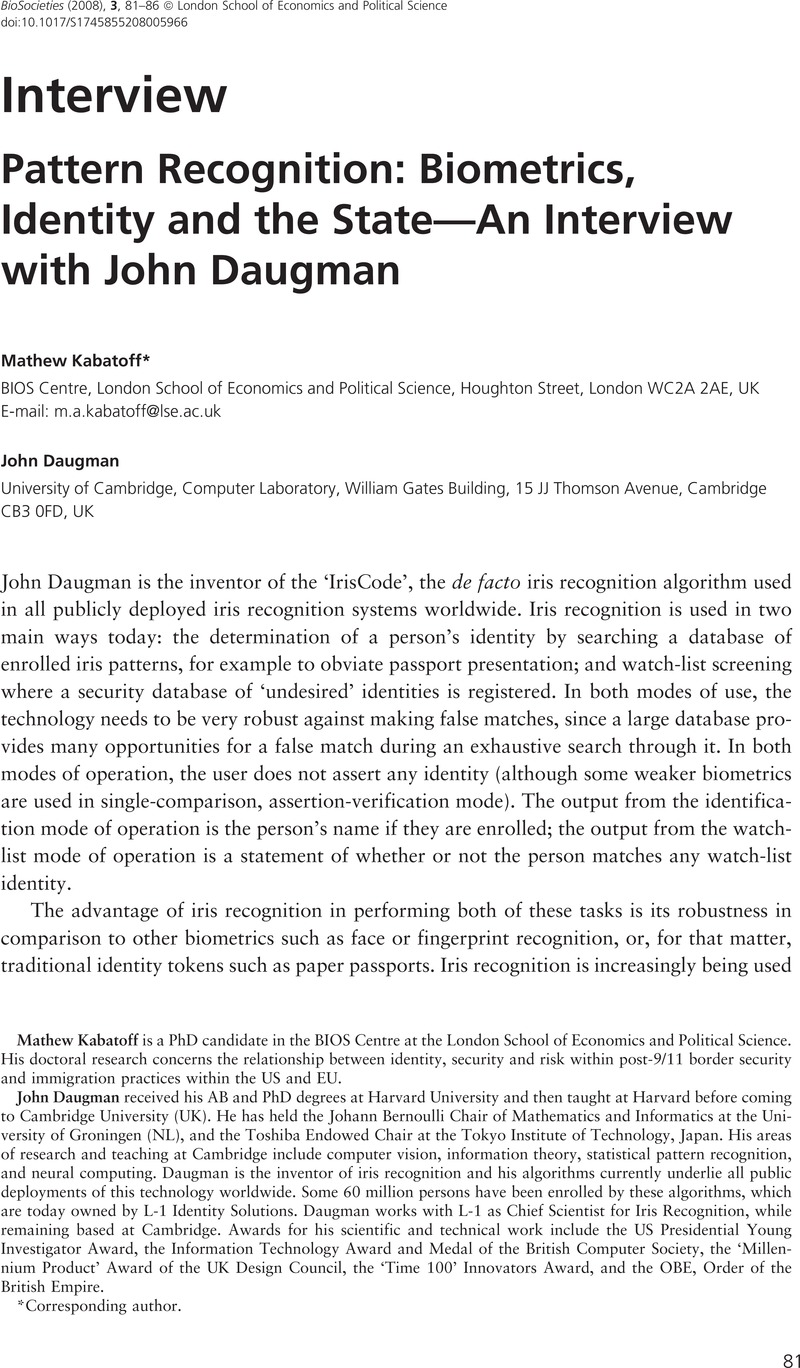Article contents
Pattern Recognition: Biometrics, Identity and the State—An Interview with John Daugman
Published online by Cambridge University Press: 01 March 2008
Abstract

- Type
- Interview
- Information
- Copyright
- Copyright © London School of Economics and Political Science 2008
References
1 Each time a new iris biometric is matched at the UAE border an N × N (all-against-all) comparison is performed on the iris database to determine if the individual appears on the UAE’s watch-list. The watch-list itself has a population of approximately 365,000 iris templates. This matching process is only performed on foreign nationals who require a visa to enter the UAE.
- 6
- Cited by




